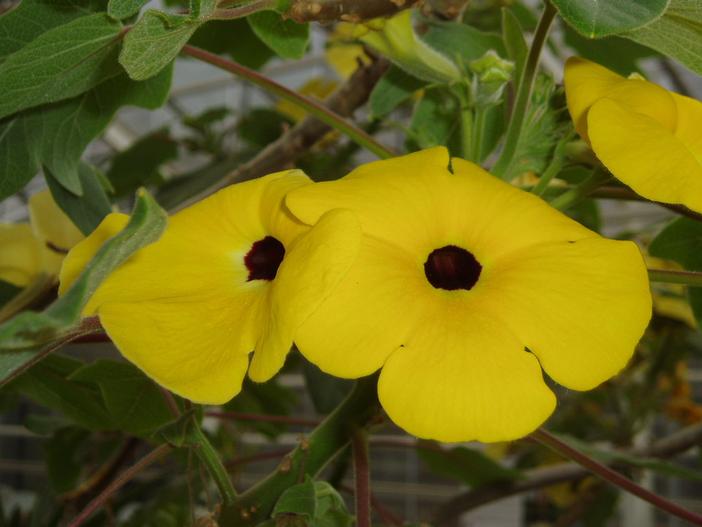Mouse Trap Tree
(Uncarina grandidieri)
Mouse Trap Tree (Uncarina grandidieri)
/
/

Udo Schröter
CC BY-SA 2.0
Image By:
Udo Schröter
Recorded By:
Copyright:
CC BY-SA 2.0
Copyright Notice:
Photo by: Udo Schröter | License Type: CC BY-SA 2.0 | License URL: https://creativecommons.org/licenses/by-sa/2.0/ | Uploader: Udo Schröter | Publisher: Flickr




















Estimated Native Range
Summary
Uncarina grandidieri, commonly known as Mouse Trap Tree, is a deciduous shrub or small tree native to the dry deciduous forests and spiny thickets of Madagascar. It can grow to a height of 8-12 feet (2.4-3.7 meters) and a width of 4-5 feet (1.2-1.5 meters). The Mouse Trap Tree has a distinctive appearance with a thick, succulent stem and large, heart-shaped leaves. It produces showy, bright yellow, trumpet-shaped flowers with a dark throat throughout the spring, summer, and fall, which are highly attractive to pollinators.
In cultivation, Uncarina grandidieri is valued for its unique aesthetic and its ability to thrive in arid conditions, making it suitable for xeriscaping and as a specimen plant in succulent gardens. It requires full sun to flower profusely and prefers well-draining soil. While it tolerates low water conditions, moderate watering will support better growth. It is not commonly used in large-scale plantings due to its rarity and specific growing requirements. Gardeners should handle this plant with care, as it has hook-covered fruit that can cling to animal fur and clothing. It is also important to note that all parts of the plant are toxic if ingested.CC BY-SA 4.0
In cultivation, Uncarina grandidieri is valued for its unique aesthetic and its ability to thrive in arid conditions, making it suitable for xeriscaping and as a specimen plant in succulent gardens. It requires full sun to flower profusely and prefers well-draining soil. While it tolerates low water conditions, moderate watering will support better growth. It is not commonly used in large-scale plantings due to its rarity and specific growing requirements. Gardeners should handle this plant with care, as it has hook-covered fruit that can cling to animal fur and clothing. It is also important to note that all parts of the plant are toxic if ingested.CC BY-SA 4.0
Plant Description
- Plant Type: Shrub, Tree
- Height: 8-12 feet
- Width: 4-5 feet
- Growth Rate: Moderate
- Flower Color: Yellow
- Flowering Season: Spring, Summer, Fall
- Leaf Retention: Deciduous
Growth Requirements
- Sun: Full Sun
- Water: Low, Medium
- Drainage: Medium
Common Uses
Drought Tolerant, Low Maintenance, Showy Flowers
Natural Habitat
Dry deciduous forests and spiny thickets in Madagascar
Other Names
Common Names: Unicorn Tree
Scientific Names: , Uncarina grandidieri, Harpagophytum grandidieri, Harpagophytum dimidiatum, Uncarina didierii, Uncaria grandidieri, Uncarina dimidiata,
GBIF Accepted Name: Uncarina grandidieri (Baill.) Stapf